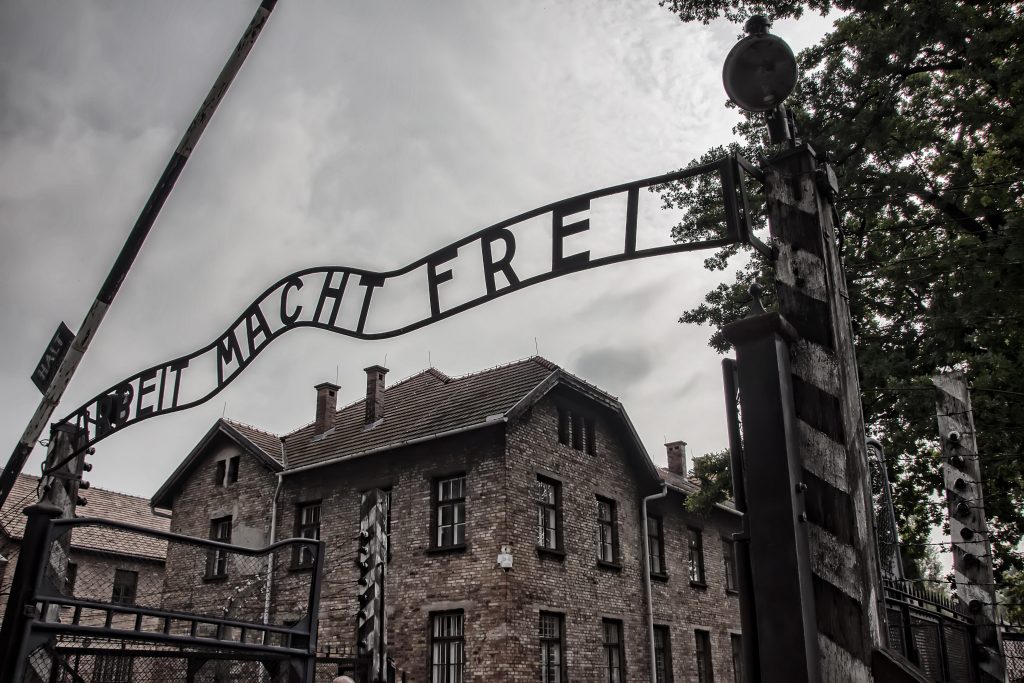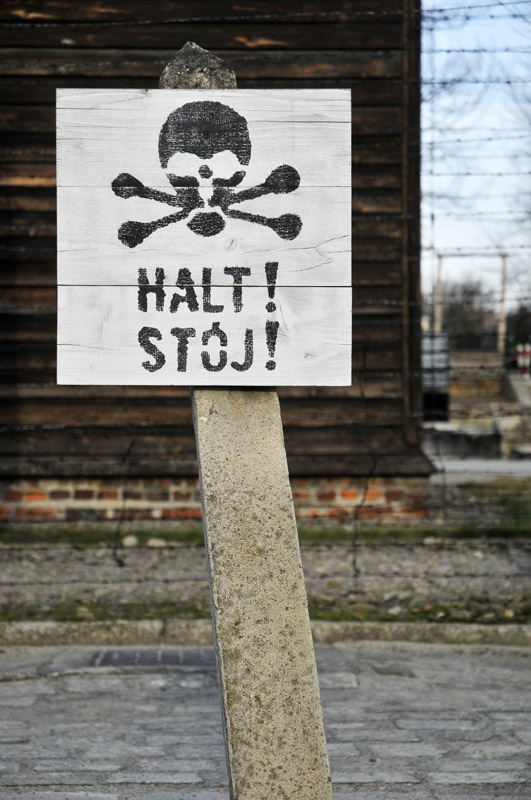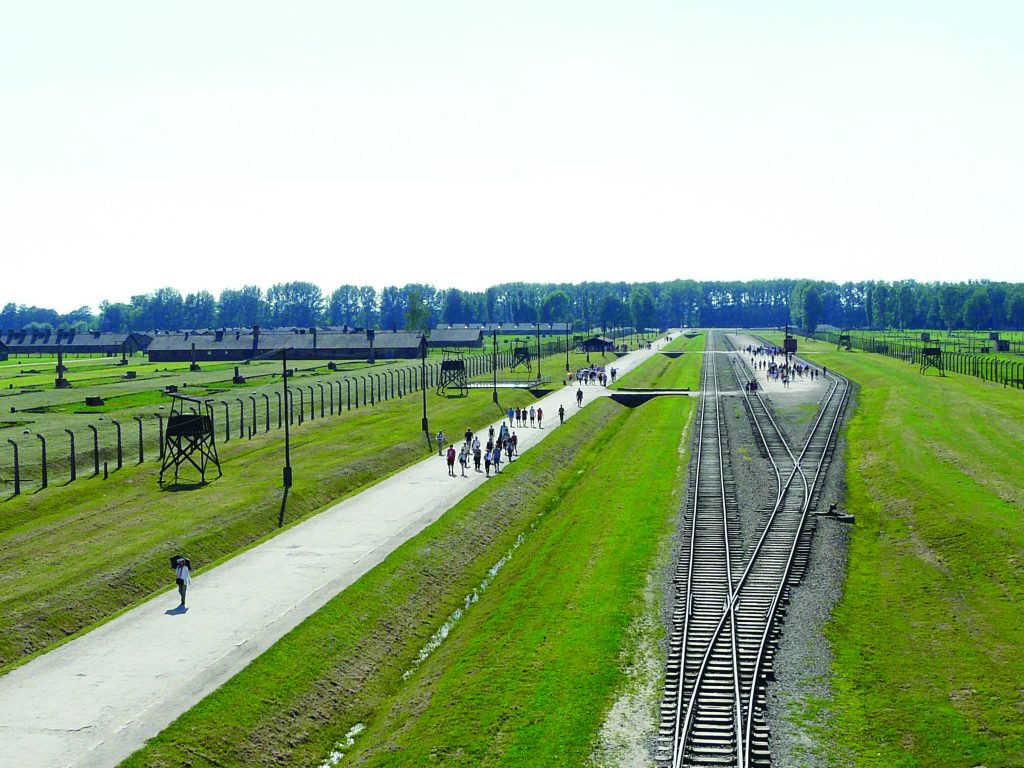Dr. Piotr M. A. Cywiński, Director of the Auschwitz-Birkenau State Museum
Cover picture: Visitors in the Auschwitz-Birkenau State Museum | EUROM
Whether visitor attendance is good or poor, whether it grows or remains stable, is not the essence of the matter. Attendance seen in terms of a sacred, annual number is really just a museum fetish.
What is more important than admiring the attendance is trying to understand and organise it. This is where the external element, the will of a person or of a group of people to come to the Memorial Site, ends, and where the work of the people responsible for this Memorial begins. It might be why we keep comparing total attendance so much, but often fail to carry out an in-depth analysis of its composition or work consciously to develop it. But isn’t this one of our basic tasks?
It is easy complain about the development of tourism, looking at what some have called ‘dark tourism’ with distrust and suspicion, and complaining that we are not alone as we walk around the post-camp area. Of course we would all prefer to be on our own at such a difficult moment. Everyone thinks that they are the most aware, that they know how to behave in the best and most sensitive way, what to ask, when to nod and keep silent. Other people are a distraction. When you are standing face to face with humanity, hell is indeed other people – especially those we suspect of being tourists or of having tourist intentions, tourist opinions, tourist needs. Those who, in our opinion, came to the Memorial Site by accident, on their way between the beach and the restaurant, the hotel and castle ruins, the canoe and the campsite. Those who were lured from their hotel by accident, brought in mini-buses, organised into groups. Those who, in our exalted opinion, can’t have read Primo Levi or Elie Wiesel. Those whose sin is the fact that they don’t know anyone who suffered or died here. By accident.
I am always amused and sometimes annoyed by this common high-flown treatment of the borderline between remembrance and tourism. Yes, even if we are talking about the accident that makes a visitor to Kraków – instead of going to the medieval salt mine in Wieliczka, to the monastery in Częstochowa or to Zakopane – change their mind at the last moment, while looking through a cheap mass-produced guide at the hotel reception, and decide – maybe on an impulse – to come to Auschwitz. As if we had the right to judge such an impulse or even mock it.

Young people, high school and university students, are treated in a rather similar way. Because they are laughing as they get off their coach, because they are talking loudly, because they didn’t go on a trip somewhere else. Because they are taking selfies, oh horrors! I remember a group of German local government officials who came to talk to me. At the end of their visit, one of them asked me: ‘What are you going to do with this painful subject of selfies?’ ‘Too bad you can’t see any more painful problems’, I thought to myself, a little unkindly. And I said: ‘I will take care of it as soon as I see the first politician visiting the museum without a personal photographer. It’s the same thing. Young people don’t have personal photographers, so they take pictures themselves. That’s the culture…’
If you listen to some of the complaints or read some of the highly judgmental articles, written easily and (far too) quickly, there is no one quite so annoying as young people and tourists. But these groups may constitute 90% of our visitors.

Thomist philosophers like to repeat that if something happens by accident, you should pay special attention to it. Therefore, I am not that interested in why people come here, whether they’re on a school trip or a tourist visit. I’m not that interested in their attitudes or backgrounds. Of course, ideally everyone should come to the Memorial Site well prepared, with proper knowledge and understanding of the topic, even perhaps with some memory of it. But it is not what the person arriving here thinks that is crucial to me, but what that person takes away with them when they leave. That is why it is so important to understand who they are. Attendance is not a question of annual numbers: it means groups, divisions, minorities, particularisms, sensitivities, exceptions. That’s the only way to try to understand it.
So who visits Memorial Sites? After all, questions about the identity of visitors are important. Do we know for sure how different the January attendance numbers are from the May numbers, or from the numbers in August in the summer? How many of our visitors are young people, high school students brought by teachers? This question will allow us to answer another one: is our cooperation with teachers good enough to make them understand the meaning of a visit of this kind, and to prepare their students appropriately? What percentage speaks a foreign language? This other question will allow us to assess the level of language preparation of our guides, educators, the suitability of our book publications, audio-guides… But not only that! After all, every language reveals a different ethnic and national identity, a different historical and cultural background, a different set of concepts and symbols, and different contemporary challenges. And do we know how many visually or hearing-impaired disabled people visit our Sites? Are there any homeless people among the visitors?
It would seem that, without conducting regular surveys, we will never attain this knowledge and that only a spinning wheel or a counting camera will allow us to determine the number of visits per year. This is especially so in places without an extensive tour guide system (where even the tour guides’ knowledge of the visitors is fragmentary).
The booking system can be of great help here. Due to the large number of visitors, the Auschwitz-Birkenau Memorial was obliged to create such a system. Over the last decade or so, the number of visitors has increased four times, exceeding two million people a year. For the safety of both the monuments and the visitors, as well as for their basic comfort, there is an hourly maximum limit of a thousand people. Therefore, it was necessary to create a booking system, as in cinemas, concert halls or trains; even though entrance itself is free, booking a ticket has become a necessity. This allowed us to completely change the analysis of attendance both in terms of numbers (the reporting is basically done at an hourly rate) and the composition of visitors – their country of origin, language, whether they come alone or as part of a group, repeat visits by a given tourist service company, school, teacher, organisation, association…

The system is still far from perfect, that is for sure. We are continuing to work on making it more tight and efficient, but the 2018 reports were the first ever to include the exact number of people of uncertain origin. For the first time!
The analysis of this knowledge allows us to see the trends; it provides us with obtain socio-economic data on our visitors and establishes where they come from. This information can show us which languages our tour guides need (although Auschwitz already offers tours in 22 languages) and which languages our main publications should use. It also indicates which countries or diplomats we need to work with more, and how we should improve our cooperation with the media or local governments.
These seem to be obvious solutions for products of all kinds, so why should we think that this analysis is inappropriate in a Memorial Site? That it might appear to be too ‘market-oriented’? You couldn’t be more wrong! This focus is an integral part of paying attention to remembrance. If we want to know the current state of this remembrance, who needs it, and who still thinks they don’t need it that much; if we want to know what we should do to keep it alive, and last but not least, if we want to prepare the suitable tools, then there is no other way but to monitor the attendance wisely and carefully. And we must remember that when we see people coming in, it is our special task to think about those who are absent for whatever reason. It is this endeavour that directly sets the trends for our daily activities.
Understanding the situation of modern memory and the challenges facing it is one of the foundations for building the memory of tomorrow.
